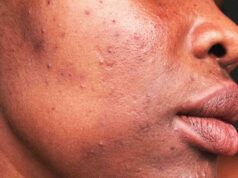QUESTION: Hello Doctor,
I usually bleed while brushing my teeth and it is getting me worried, what is the possible cause and treatment? Medard.
ANSWER: Hello Medard, as a general doctor, I would like to emphasise that dental problems are handled optimally by dentists, whom we all have to develop a lifestyle of visiting regularly.
Please note: Your gums should never bleed while brushing or flossing.
One should know that blood on the toothbrush or dental floss is one of the earliest and most common signs of gingivitis.
The good news however, is that gingivitis is preventable and reversible through good brushing and flossing techniques (or other interdental tooth cleansing).
On the other hand, if oral hygiene habits are poor, gingivitis may progress to periodontitis.
Healthy gums are characterized by: pink or coral pink colour, (normal variations in color depend on race and complexion), no areas of redness, swelling or inflammation, no bleeding during daily plaque removal and no discomfort

What is gingivitis?
Gingivitis is inflammation of the gum tissue.
Here, the gums are irritated and swollen due to a plaque or calculus (tartar) buildup along the gum line.
The gums may be sore, bleed and appear puffy, soft and swollen.
Usually, no bone structure is lost around the teeth at this stage of gum disease.
What is periodontitis?
Periodontal disease is destruction of bone and the structures supporting the teeth.
Unfortunately, periodontitis is irreversible, but you can stop its progression through good oral hygiene and visiting your dental professional.
Warning Signs
- Gums that bleed when you brush or floss your teeth.
- Gums that are red, swollen or tender.
- Gums that have pulled away from teeth.
- Infection; including purulence (pus) between the teeth and when the gums are pressed.
- Permanent teeth that are loose or separating.
- Any changes in the way your teeth fit together when you bite.
- Any changes in the fit of your partial denture.
- Bad breath.
- Itchy sensation.
Early periodontitis:
– Periodontitis occurs when the inflammation of the gums progresses into the deeper underlying structures and bone.
– In the most common form of periodontitis, plaque (and sometimes calculus) is found below the gum line.
– The gums may feel irritated, appear bright red, and bleed easily.
Prevention
Regular homecare
– Brush.
– Floss (a cord of thin filaments moved up and down the tooth).
– Rinse (with mouth wash containing disinfectant like chlorhexidine).
– Regular dental visits.
– Dietary consideration.






















